The M.S. Matter Design Computation (MDC) program launched in 2016 and was founded and directed by Professor Jenny E. Sabin. The advanced research program with a focus on design and emerging technologies was housed in the field and department of Architecture at AAP and served as a foundation and precursor to the new M.S. Design Technology program.


Polybrick 2.0
Student
Eda Begum Birol (M.S. MDC '21)
Class
Design Topic Research Studio III
Instructors
Jenny E. Sabin
Christopher Hernandez
Description
Ceramic modules of standard measurement have been used as a building block for many centuries. With rapid developments in the area of clay additive manufacturing, there is an emerging possibility to reintroduce non-standard clay building blocks in load-bearing applications.
Natural load-bearing structures are characterized by aspects of specialized morphology, lightweight, adaptability, and a regenerative life cycle. Like many natural load-bearing structures, the bone is comprised of a solid outer shell and a foam (cancellous) core. The cancellous core, also called trabecular bone, is a heterogeneous lattice structure.
The trabecular bone exhibits morphological responses to applied loading conditions. These morphological responses include bone resorption and apposition, and trabecular directionality adaptations. These adaptations establish the trabecular lattice as an ever-evolving function of specific loading.
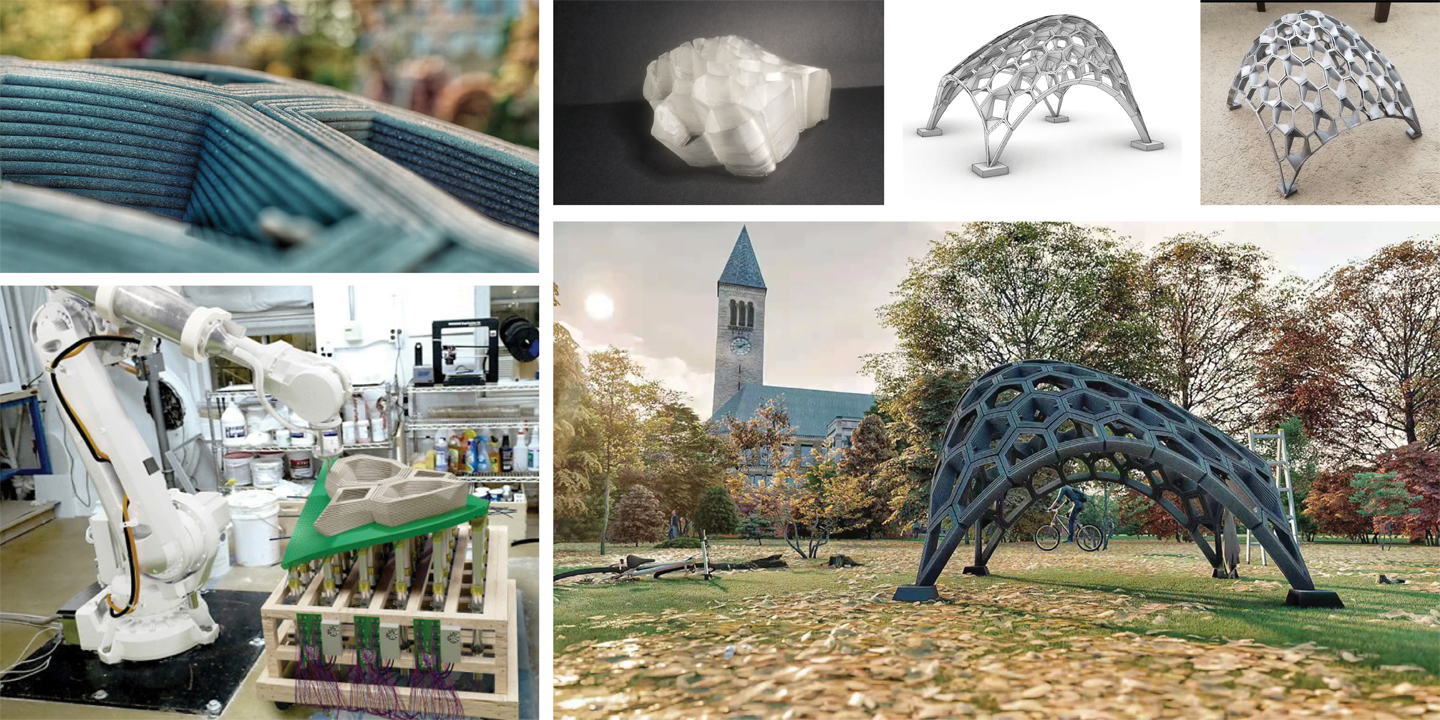

Interactive Fabrication Informed Design Strategy
Student
Teng Teng (M.S. MDC '21)
Class
Design Topic Research Studio III
Instructors
Jenny E. Sabin
François Guimbretière
Description
The conventional digital design-make workflow can rapidly materialize product design. Fabrication tools are designed to precisely manufacture the artifacts prototype at late design phases to implement design output, where it targets the final products' precise dimensions, positions, and tolerances. However, the instantiation process divides the making process with the makers of the original representation. The growing distance between digital and physical, design and making, leads to a one-directional linear process. The process requires designers to create a conceptual model in a graphic user interface and convert it into a fabrication-oriented optimized scheme. Consequently, fabrication is split from the design process as the workflow provides indirect instruction on multiple interfaces.
Design as an abstract thinking activity connects with materialized design results through the mediating influence of fabrication. This novel design strategy aims to integrate design and fabrication into an interactive loop where fabricated outcome acts as an input to inform design intent and generate new iterations. The strategy is implemented by developing a series of design/fabrication tools and exploiting them to conduct design/fabrication tasks.


Human-Robot Interaction for Real-Time Toolpath Generation
Student
Mahshid Moghadasi (M.S. MDC '21)
Class
Design Topic Research Studio III
Instructor
Jenny E. Sabin
Description
Robotic manufacturing in architecture has enabled novel methods of design, however collaborative design with robotic agents has not yet significantly departed from the past process of repeatedly running a predetermined fabrication routine without real-time input from the designer.
This research explores the potential for live design input from both the human and the environment during the fabrication process. Using an ABB 120 robotic arm as a stationary-articulated agent, these experiments utilize various forms of visual communication, actuated by human designers, to record the motions of the arm in the form of a drawing.
These drawings may be interpreted as 3d printer toolpaths, or alternatively, as a pick and place toolpath for discrete building blocks along their route.
Because the cues are interpreted in real-time, a human could change the design outcome, environmental conditions could influence the fabricated result, and stigmergic principles of multi-agent systems could be leveraged to add generative non-predetermined feedback to the fabrication routine.
As such, the act of fabrication becomes an act of design, by humans, nature, and other robots. The architectural object to be created depends on the collaborative performance of all agents in real-time.


Shape-Programmed Self-Assembly of Bead Structures
Student
Cameron Nelson (M.S. MDC '21)
Class
Design Topic Research Studio III
Instructors
Jenny E. Sabin
Description
This project is an exploration of bead structures, and which configurations of geometry are best suited to self-assembly. Study models using generic square beads resulted in different nonstandard arches that were formed semi-randomly when tension was applied. An interesting pattern in which the location of kinks in the path of the arch appeared to maximize a function of the angles at those kinks, as if the arch wanted to be as straight as possible.
Final studies include large-scale beads made out of rigid insulation foam. The foam is cut to shape using a hot wire end effector custom designed for the robot in the AAP shop. This end effector has been carefully designed to be safe and modular, allowing the width and depth and wire gauge to be easily adjusted, with the intention of being used by future students at AAP.
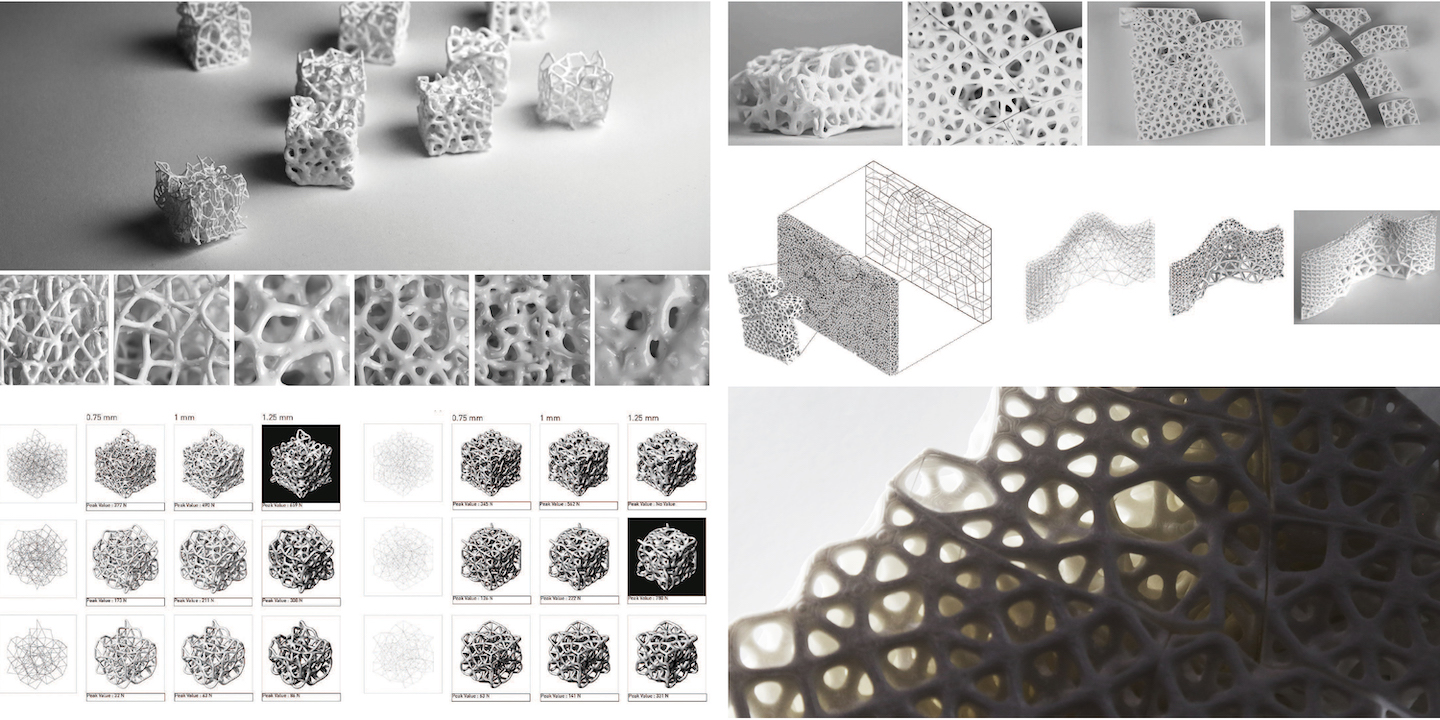

PolyBrick 2.0
Students
Yao Lu (M.S. MDC '20)
Eda Begum Birol (M.S. MDC '21)
Ege Sekkin (B.Arch. '20)
Colby Johnson, ENG
Yaseen Islam, ENG
Class
Advanced Research Studio: Matter Design Computation
Instructor
Jenny E. Sabin
Description
Natural load bearing structures are characterized by aspects of specialized morphology, lightweight, adaptability, and a regenerative life cycle. PolyBrick 2.0 aims to learn from and apply these characteristics in the pursuit of revitalizing ceramic load bearing structures. For this, algorithmic design processes are employed, whose physical manifestations are realized through available clay/porcelain additive manufacturing technologies (AMTs). As part of the comprehensive workflow novel algorithmic processes are developed, fabrication methods are outlined, prototype performances are evaluated, and architectural applications are envisioned. PolyBrick 2.0 suggests a complete methodology in continuing PolyBrick's ubiquitous aim to "bridge digital processes with the production and design of nonstandard ceramic building blocks in architecture."
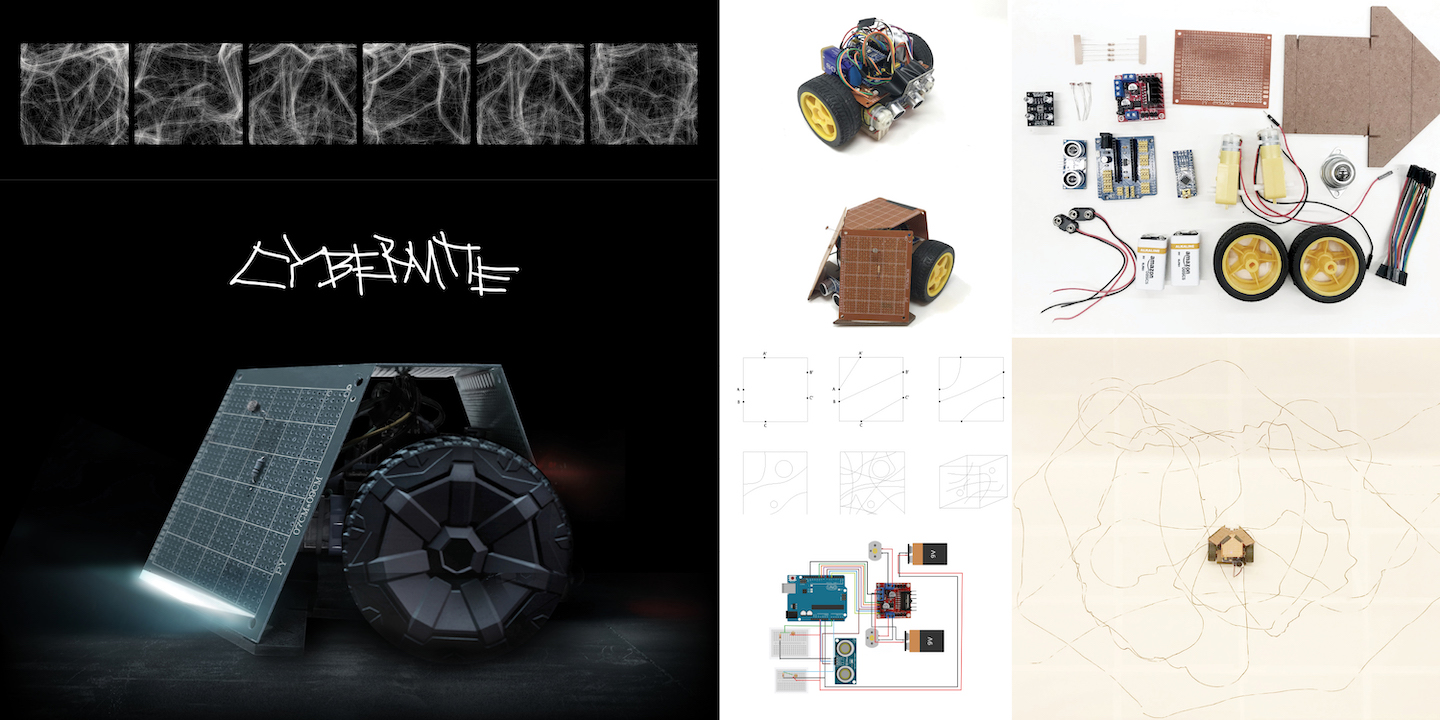

CyberMite
Students
Mahshid Moghadasi (M.S. MDC '21)
Hank Huang (M.S. MDC '21)
Julia Narakornpichit, Connective Media
Bowen Zhang, Connective Media
Yue Wang, Connective Media
Class
Advanced Research Studio: Matter Design Computation
Instructor
Jenny E. Sabin
Description
"CyberMite" aims to explore new methods of construction inspired by termites through agent-based algorithms, simulation, and robotic construction. It draws inspiration through autonomous agents such as termites, and in particular the way they build within a decentralized decision system. CyberMite pushes the boundary of how collective construction can be applied to the next generation of automation in architecture that emerges from the stigmergic behaviors between the agents and the environment.
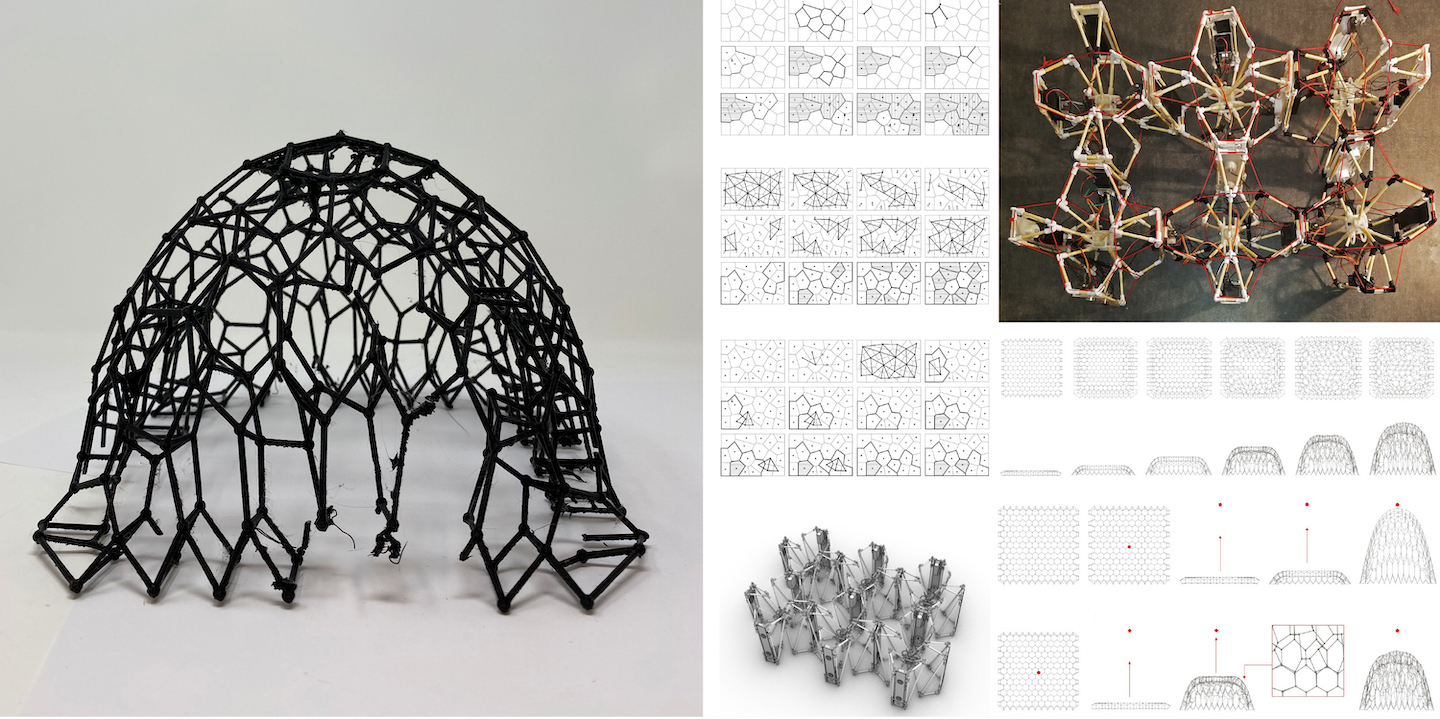

Epithelial-Inspired Generative Design Investigation and Robotics
Students
Teng Teng (M.S. MDC '21)
Benjamin Jia (M.S. MDC '21)
Yuxi Sun, Connective Media
Jiaxin Guo, Connective Media
Class
Advanced Research Studio: Matter Design Computation
Instructor
Jenny E. Sabin
Description
In this project, starting from a newly discovered shape called "Scutoid," we first utilized the generative geometric approach to investigate how animals' epithelial cells pack 3-dimensionally to facilitate tissue curvature in animals' skin, organ, and blood vessels. We created a series of parametric model generators to represent this mechanism and process. Through these steps, we found that once multiple cells packed together as a whole, the morphology of individual cells significantly impacts the morphological property of global geometry. To clearly reflect this geometrical characteristic, beyond the generative geometric approach, we decided to design a new type of single motion robotic system that combines multiple scutoid-inspired robots, which are called "Scu-bot." Each robot imitates the mechanism of the packing of four epithelial cells. By changing the length of the central segment of the support frame structure, Scu-bot can bend itself in two directions. The part-to-whole relationship is also embodied by the joint design of the Scu-bot. Each Scu-bot is installed with four electromagnets to allow multiple Scu-bots to be packed as a whole robotic system.
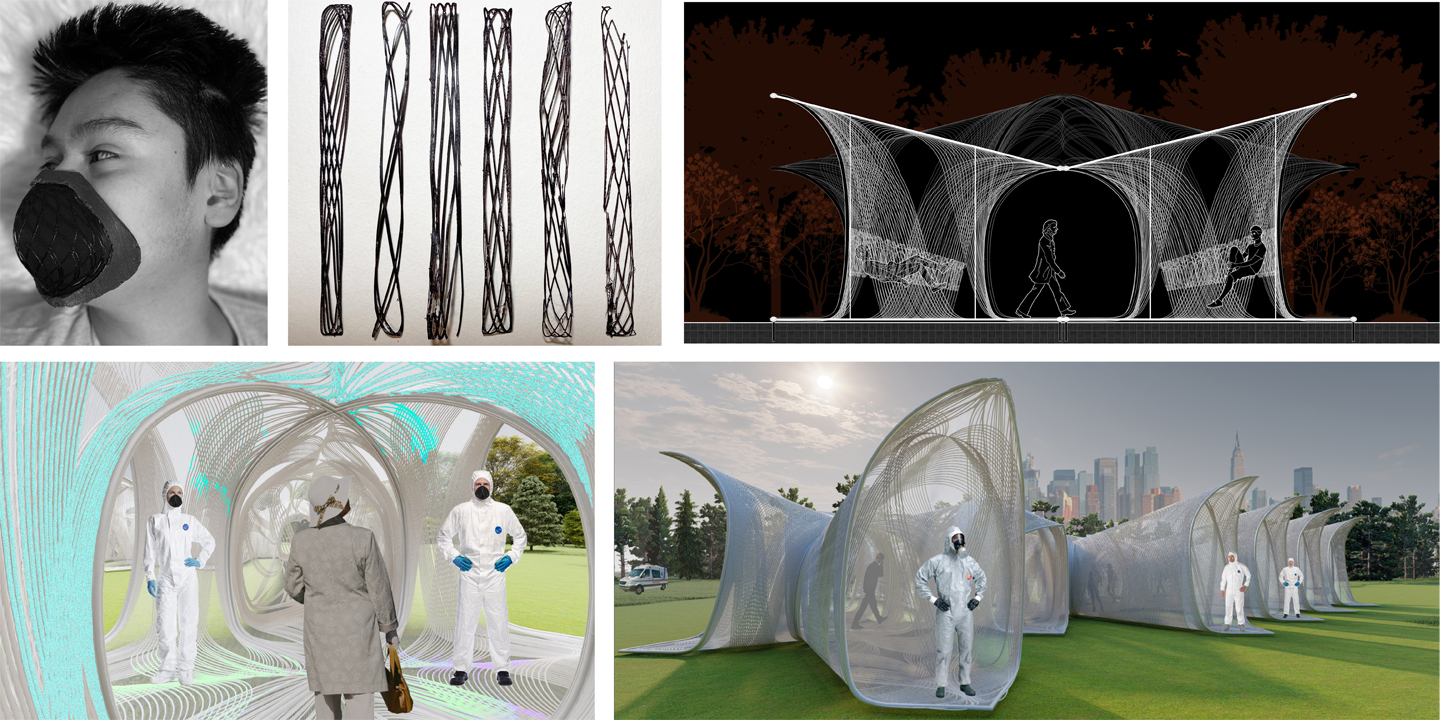

Lissajous PPE + Modular Shelter
Students
Asbiel Samaniego (M.S. MDC '22)
Yixaio Chen (M.Arch. '22)
Adelaide Fuller, M.B.A. candidate at Cornell Tech
Class
Design Topic Research Studio I
Instructor
Jenny E. Sabin
Description
In the context of the global pandemic, it was those who had access to 3D printers that played a crucial role and were able to contribute and provide PPE to our healthcare workers. Our objective is to design a mask that takes inspiration from the silkworm by extracting principles that with the 3D printer as our main design tool fabricate a mask that addresses issues of fit and comfort.
During the pandemic hospitals were being overflown with the large number of patients suffering from COVID-19. The solution to this were deployable small hospitals. However, not much has changed in their design and function for more than a century. The shelter design of the future is comprised of 3d printed bending active surfaces that make up special modules that are able to connect and create multiple configurations.


Making and Designing PPE
Students
William Qian (M.S. MDC '22)
Heidi He, M.S. student at Cornell Tech
YiLi Zhao, M.D./M.B.A. student at Weill Cornell/Cornell Tech
Class
Design Topic Research Studio I
Advisors
Jenny E. Sabin
Description
This PPE project conducted in collaboration with students from architecture, connected media, and medical background takes an alternative perspective on design PPL by incorporating sustainability, reusability, and variable scale deployment considerations.
Inspired by the fluid physics of sea sponge's filter-feeding behavior, the team designs a volumetric filtration system with filter chambers that capture airborne particles through geometrically induced diffusion. Real-life cross-sectional fluidic studies were also conducted to support the hypothesis.
In the Second Module of the studio, the team re-interprets the original inspiration in the context of urban scale applications. Supported by COVID data from accumulative research review, the team re-imagines the design narrative into porous structures/hubs purposed to rapidly increase urban foliage density at selected sites. In addition, COVID is not a one-man's battle. The proposed structure re-introduces indiscriminate public access to restricted urban space to promote a wide spectrum of inclusivity. In parallel thinking with business logistics taught by Cornell Tech's product studio, the Team also developed preliminary operation logistic models, seasonal revenue structures, and possible collaborative incentives with existing public/private institutions.
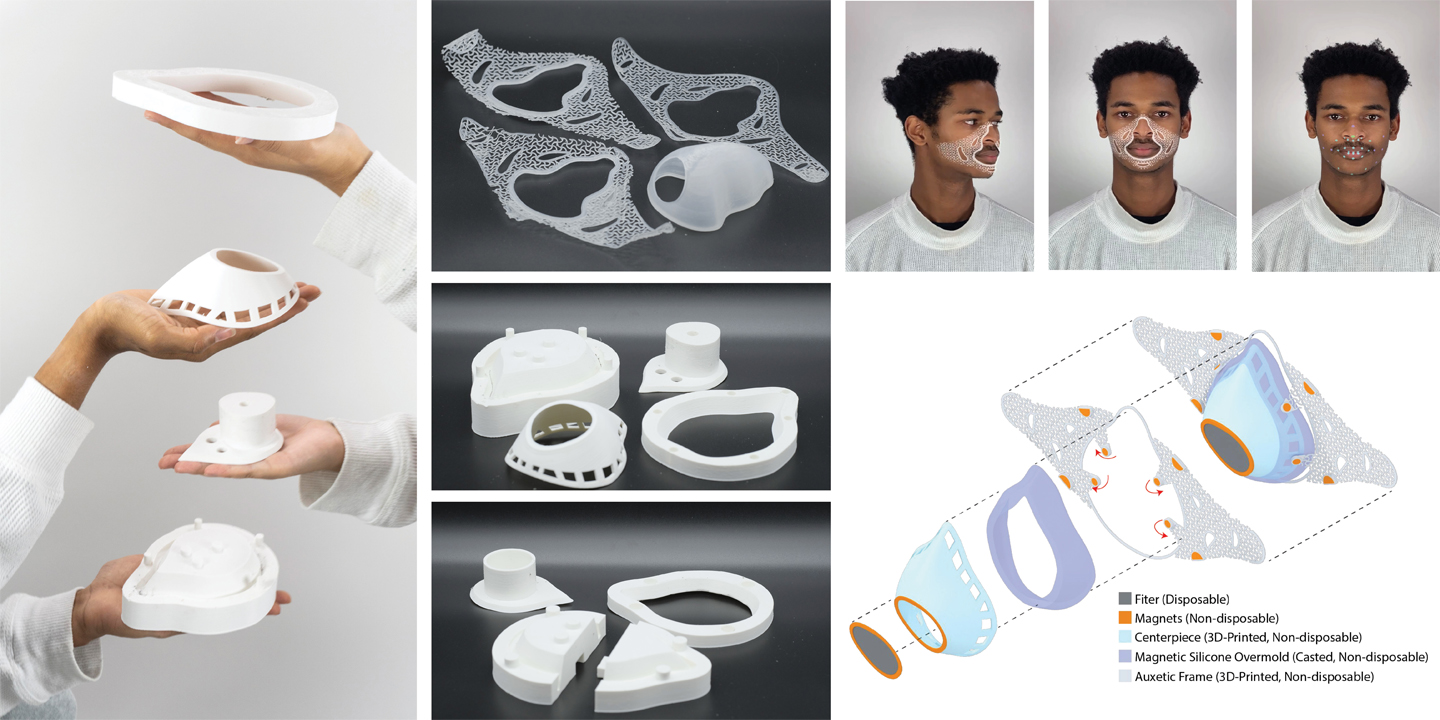

Smile Sync
Students
Yifei Peng (M.S. MDC '22)
Alexia Asgari (B.Arch. '22)
Mouna Allani, M.B.A . candidate at Cornell Tech
Class
Design Topic Research Studio I
Advisors
Jenny E. Sabin
Description
The first design subject is a mask. Our survey result indicated that the top three most desired features of a mask are its comfort for long term use, an easy wearing mechanism for different scenarios, and the level of visibility to enable normal facial expression. We decided to target those demands through a mask design incorporating an auxetic frame for flexibility and visibility, a simple magnetic attachment system, and digital facial data collection for customization of the frame to provide optimized fit.


Reaction Diffusion on Face Shield and Screen
Students
Jiyoon Bae (M.S. MDC '22)
Lala Bregvadze, Cornell Tech
Gareth Valentin (M.Arch. '24)
Class
Design Topic Research Studio I
Advisors
Jenny E. Sabin
Description
In the circumstance of COVID-19 pandemic, we faced the new normal situation that wearing the face mask or face shield became part of our daily life across the world. Therefore, this brought me the question, how might we take this new normal situation and understand the PPE as not only protective gear but also a tool for self-expression.
This project aims to fuse the function of self-protection and self-expression. Moreover, this work closely looks at the concept of reaction diffusion and investigate how does the surface condition which is applied the reaction diffusion pattern works not only aesthetically but also performance aspect, specifically airflow. The pandemic also affects the many physical spaces due to the constrain of physical barriers. As the second stage of the studio, the research expends the idea and process of the first stage to develop foldable and portable screen with unique surface condition that cover the scale from body to bigger spaces. In order to fulfil these design objectives, this project takes advantage of the open-source CFD simulation tool called 'SimScale' as a design input as well as performance evaluation for both face shield form finding as well as room scale spatial application.

